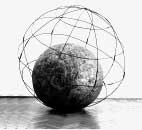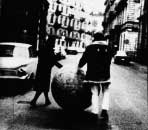Arte Povera
After the Second World War the city of Turin was
transformed into an industrial centre when a number of big companies settled
there. The economic boom attracted large numbers of workers from all over
the country, an immigrant population that gradually settled in the suburbs,
bringing about a change in the urban and social landscape and becoming
more and more relevant for public life. The politicisation of everyday
life, particularly notable in the second half of the sixties, was to be
seen in the importance of the Communist Party, student unrest, demonstrations
and strikes and the formation of creation of politically committed groups
who were even in favour of armed struggle.
In that context, some artists set out to examine – from a critical
perspective – their own attitude in industrialised society and questioned
the models laid down by tradition and the past. Among them were some young
artists who, even though they never structured themselves as a movement,
were brought together by Germano Celant under the name povera,
a term taken from Grotowski’s theatrical concepts, which appeared
for the first time in the text for the exhibition Arte povera - Im
Spazio (1967). Celant defined arte povera as an art which made sensory
perceptions material and rejected the hierarchies of techniques and materials.
He also attributed to artists the role of "guerrilla warrior",
since their work was a social gesture, a compositional liberation which
aimed at identification between human being and the world. Along these
lines, in 12 forme dal giugno ’67 (1967-1971) Alighiero &
Boetti shows the provisional nature of territory by presenting a cartography
of the various political and military conflicts which were taking place
in different parts of the world between 1967 and 1971, with the reference
to the date of publication of news on them in the Turin newspaper La
Stampa. And Michelangelo Pistoletto uses the world as an object to
be manipulated in Mappamondo (Ogetti in meno) (1966-1968).
Michelangelo Pistoletto: http://www.cittadellarte.it/unidee/index_e.html

Michelangelo Pistoletto,
Mappamondo (ogetti in meno) 1966-68

Michelangelo Pistoletto,
Scultura da passeggio 1966.
Frame of the film
"Buongiorno Michelangelo" by Ugo Nespolo
